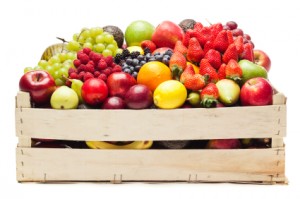Research: Hygiene of wood in contact with fruits, fish and cheese
 Two recent research studies in France and Spain demonstrate the superior antimicrobial properties of wood species such as pine and poplar, when compared to smooth synthetic materials, including plastics.
Two recent research studies in France and Spain demonstrate the superior antimicrobial properties of wood species such as pine and poplar, when compared to smooth synthetic materials, including plastics.
In November, the 66th FEFPEB Congress in Cork (Ireland) and the 29th Congress of the European Federation of Science and Food Technology (EFFoST) in Athens (Greece) presented new scientific studies on wood and food safety.
In Cork, a presentation was given on the conclusions of an extensive three-year research initiative by the “EMABOIS” consortium, composed of 27 research projects and directed by Aviat and Federighi, that have led to several doctoral dissertations and scientific articles on wood. Their conclusions are in line with microbiological comparative work on fish packaging by Rodríguez Jerez of the Autonomous University of Barcelona that were presented in Athens.
EMABois, composed of various French research authorities, including Actalia, ESB, ESI Reims, FCBA and ONIRIS, carried out thousands of tests and validated methods and protocols for the microbiological and chemical analysis of wood. The results confirmed the microbiological and chemical safety of wooden surfaces in contact with fresh products such as fruits, vegetables, fish and dairy products.
As other recent studies have shown, there is a higher antimicrobial effect on wood by physical inhibition on species of wood, including spruce, pine and poplar. It concluded that its porosity is an advantage in this regard against other materials in contact with food and considered as “smooth”, such as plastic.
The conclusion reinforced the findings of Rodríguez Jerez’s comparative assessment of microbiological behavior of containers for fresh fish in the market. In fact, the surface microbiology assessment expert states that, thanks to antimicrobial properties, containers made from wood develop less contamination after contact with fish, and do not affect the quality or safety of the fish – provided that they only come into contact once.
With regard to the migration of natural wood molecules, the EMABois consortium concluded that particularly natural, volatile, organic compounds are involved, but their transfer to food is limited, meaning they are safe for the consumer. The study identifies harmless substances in the international legal framework and scientific literature, which are used in food, pharmaceutical and cosmetic industry as thickeners, flavorings or natural dyes.

































